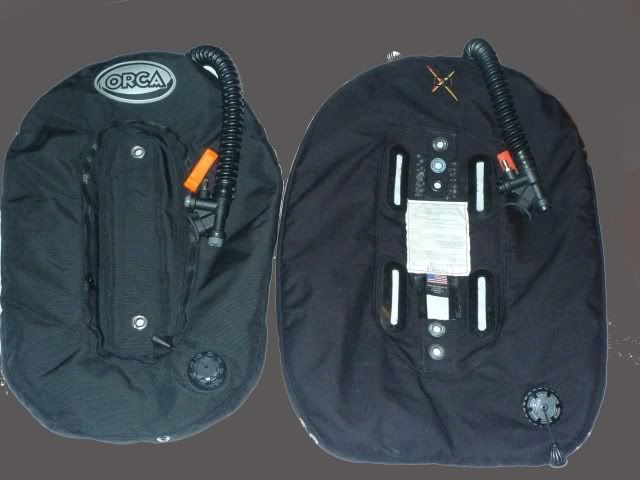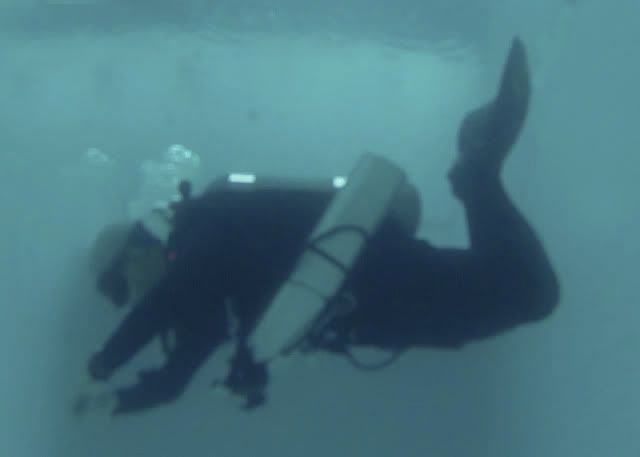Ed Palma
Contributor
So, we've all read the threads talking about using doubles wings for singles and vice versa. All the discussions about drag etc...
In the threads I've read, a wing is supposed to:
1. Float the gear on the surface
2. compensate for the loss of exposure protection buoyancy at the heaviest point (full tanks with all gear)
I've never really come across anyone seriously saying that you might need reserve lift to aid in a buddy's buoyancy loss.
So, with tall this in mind, my question stems from an actual situation I'm in. I've started the transition to doubles, and initially, since I was starting out with a small set (steel 72 dubs - 10lbs neg at most when full). I did the math: -10 for the tanks, plus manifold and regs and bands, maybe -16 lbs. Wetsuit buoyancy, maybe -6 lbs, for a total of 22 lbs buoyancy needed.I tried out using my original singles wing - a 32lb EXD wing. (shown beside my dedicated singles wing -also rated at 30lbs).

I noted a wide center panel so I though to myself to give it a try. Surprisingly, I was able to support myself, the rig, and a al40 with no problem on the surface in fresh water. (of course, this is underwater...)

There's minimal wrap or "taco" around the sides of the tank.

Just to be sure, I bought a new 50lb doubles wing. It'll have about 2 inches of excess wing on either side of the twins.
My question is: Is the 32lb wing enough for these tanks, or would you be more comfortable with a larger wing? Why?
I'm not trying to cheap out here (i did get the doubles wing...) I just want to see if there's any additional benefit to having just that bit more "excess" wing of the 50 with this set-up, as opposed to the 30lb wing.
In the threads I've read, a wing is supposed to:
1. Float the gear on the surface
2. compensate for the loss of exposure protection buoyancy at the heaviest point (full tanks with all gear)
I've never really come across anyone seriously saying that you might need reserve lift to aid in a buddy's buoyancy loss.
So, with tall this in mind, my question stems from an actual situation I'm in. I've started the transition to doubles, and initially, since I was starting out with a small set (steel 72 dubs - 10lbs neg at most when full). I did the math: -10 for the tanks, plus manifold and regs and bands, maybe -16 lbs. Wetsuit buoyancy, maybe -6 lbs, for a total of 22 lbs buoyancy needed.I tried out using my original singles wing - a 32lb EXD wing. (shown beside my dedicated singles wing -also rated at 30lbs).

I noted a wide center panel so I though to myself to give it a try. Surprisingly, I was able to support myself, the rig, and a al40 with no problem on the surface in fresh water. (of course, this is underwater...)

There's minimal wrap or "taco" around the sides of the tank.

Just to be sure, I bought a new 50lb doubles wing. It'll have about 2 inches of excess wing on either side of the twins.
My question is: Is the 32lb wing enough for these tanks, or would you be more comfortable with a larger wing? Why?
I'm not trying to cheap out here (i did get the doubles wing...) I just want to see if there's any additional benefit to having just that bit more "excess" wing of the 50 with this set-up, as opposed to the 30lb wing.




